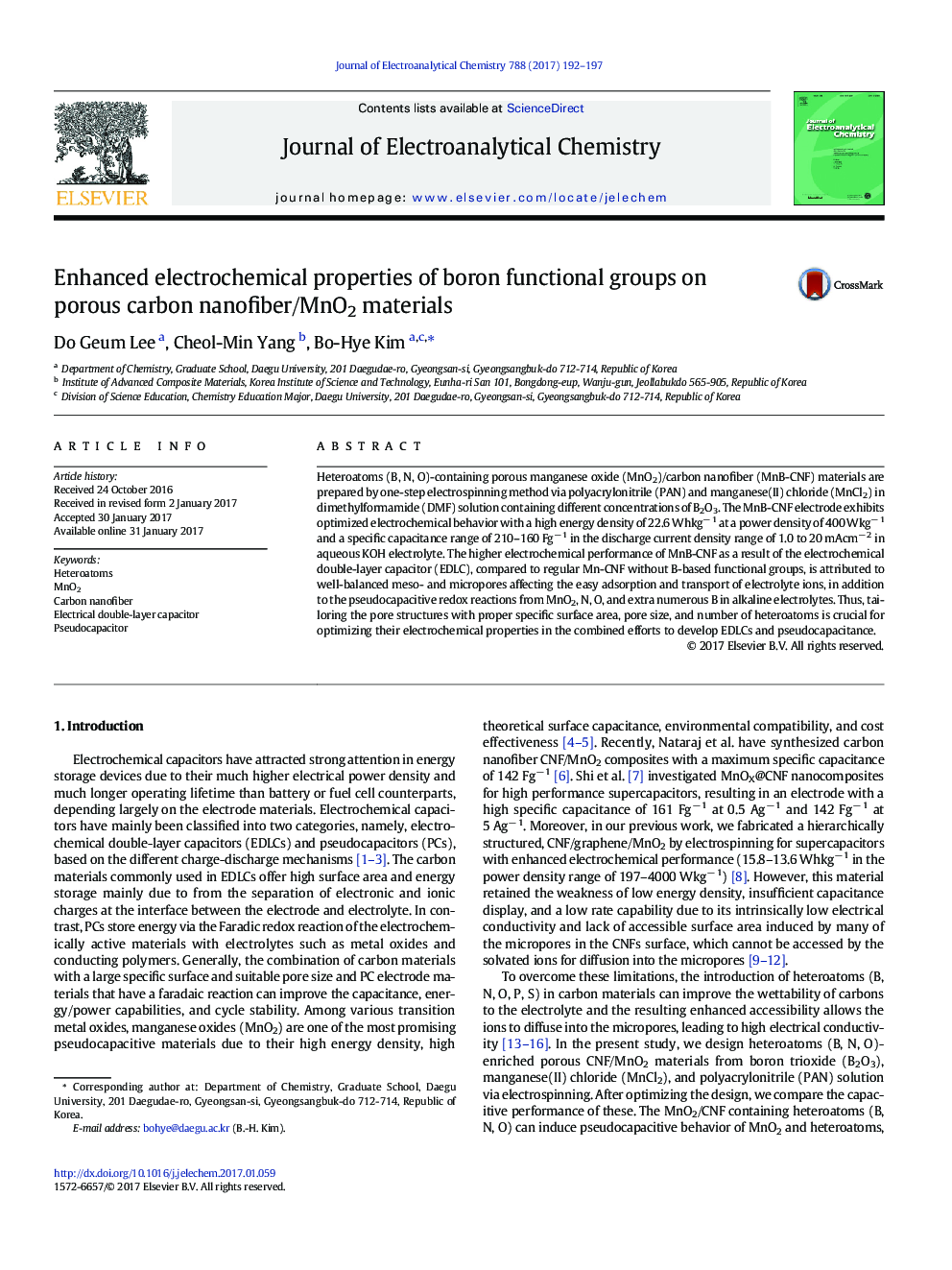| Article ID | Journal | Published Year | Pages | File Type |
|---|---|---|---|---|
| 4908002 | Journal of Electroanalytical Chemistry | 2017 | 6 Pages |
â¢MnB-CNF are prepared by electrospinning via PAN, B2O3, and MnCl2 in DMF solution.â¢The morphology and textual structure of MnB-CNFs at various B2O3 contents are studied.â¢The MnB(10)-CNF electrode shows superior electrochemical performance.â¢The improved capacitance is related to proper size and extra numerous heteroatoms.
Heteroatoms (B, N, O)-containing porous manganese oxide (MnO2)/carbon nanofiber (MnB-CNF) materials are prepared by one-step electrospinning method via polyacrylonitrile (PAN) and manganese(II) chloride (MnCl2) in dimethylformamide (DMF) solution containing different concentrations of B2O3. The MnB-CNF electrode exhibits optimized electrochemical behavior with a high energy density of 22.6 Whkgâ 1 at a power density of 400 Wkgâ 1 and a specific capacitance range of 210-160 Fgâ 1 in the discharge current density range of 1.0 to 20 mAcmâ 2 in aqueous KOH electrolyte. The higher electrochemical performance of MnB-CNF as a result of the electrochemical double-layer capacitor (EDLC), compared to regular Mn-CNF without B-based functional groups, is attributed to well-balanced meso- and micropores affecting the easy adsorption and transport of electrolyte ions, in addition to the pseudocapacitive redox reactions from MnO2, N, O, and extra numerous B in alkaline electrolytes. Thus, tailoring the pore structures with proper specific surface area, pore size, and number of heteroatoms is crucial for optimizing their electrochemical properties in the combined efforts to develop EDLCs and pseudocapacitance.
